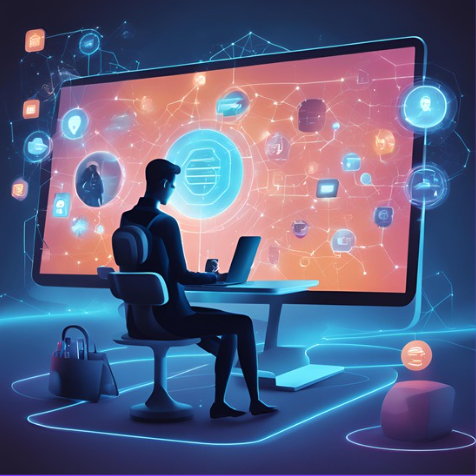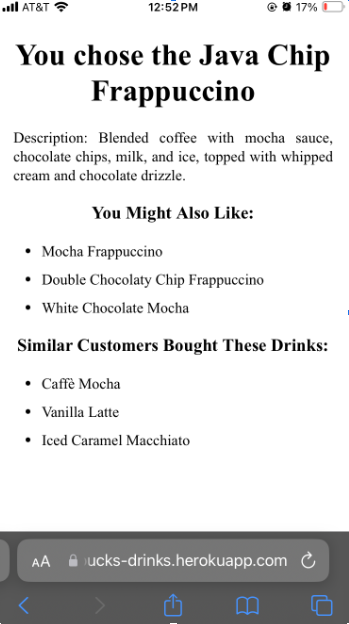The Secret Power of Recommendation Systems
Unlock the mystery behind the algorithms that shape our choices every day. Discover how recommendation systems create personalized experiences, drive business success, and even influence your next coffee order!
DATA & AIMACHINE LEARNINGRECOMMENDATION SYSTEMS
Jake Byford
11/12/20243 min read


Guaranteed, you’ve had a moment where YouTube, Amazon, or Netflix just knew you.
You’re scrolling, trying to find a good movie, the next book, or even a new coffee, and—bam!—they nail it with a recommendation that’s right on point.
Mind-blowing.
It’s like these apps are a friend who “gets” you, knows your behavior, and suggests exactly what you’re looking for.
This experience?
That’s recommendation systems at work.
And behind the scenes, this technology isn’t just convenient—it’s a goldmine for businesses.
What’s happening behind the scenes?
Greed?
Well, of course.
Magic?
No, but it feels like it sometimes.
Math?
Bingo!
Recommendation systems are recession-proof heroes, quietly shaping our choices every day.
They collect data—past purchases, viewing habits, search history—and use it to predict what you’ll want next.
Here’s the rundown:
They collect your data.
They find patterns through millions of customers.
Then, they make predictions.
Every click, every watch, every purchase feeds into the system, helping it learn your tastes.
Algorithms analyze these patterns.
Are you a sucker for true crime documentaries?
Do you order your girlfriend pink drinks every Friday?
That’s valuable data for the model.
Then, the system predicts what you’ll want to try next.
But what’s a billion-dollar bonanza without real-life examples?
Amazon: Recommendation engine powers 35% of revenue. "Customers who bought this also bought…" and "Frequently bought together" drive impulse buys and put best-selling products front and center.
Spotify: With “Discover Weekly” and “Daily Mix,” Spotify’s system personalizes music discovery. It analyzes your preferences, favorite genres, even moods. This keeps people coming back and discovering new artists—helping Spotify keep subscriptions high.
YouTube: Recommendation algorithms are YouTube’s engagement powerhouse. By analyzing your watch history and searches, YouTube serves up videos that keep you glued to the platform, boosting ad revenue and making YouTube the second most-visited site globally.
Sephora: Sephora’s recommendation system? A personal beauty advisor. It suggests products based on your skin tone, past purchases, and preferences. It makes customers feel understood and boosts online sales.
LinkedIn: LinkedIn’s algorithms suggest jobs, connections, and content that match users’ profiles. This doesn’t just keep users engaged—it aligns with LinkedIn’s mission to connect professionals with relevant opportunities.
Why should every company want a piece of this?
For businesses, a good recommendation system is a powerful tool.
Here’s why:
It drives more sales.
It builds customer loyalty.
It unlocks data insights that help shape business strategy.
Recommendation systems influence buying decisions.
When companies put the right products in front of the right people, they encourage more purchases—sometimes things you didn’t even know you wanted.
When users feel understood, they come back.
Spotify, Netflix, Amazon—they’ve turned casual users into long-term fans with this personalization.
These systems give companies valuable insights into trends, preferences, and behaviors.
That helps refine products, improve marketing strategies, and stay ahead of evolving tastes.
So, whether you’re browsing for a book, picking your next song, or choosing a coffee, recommendation systems make life a little easier—and more interesting.
And for data scientists like me, recommendation systems are a way to make a real impact, bringing people closer to products and experiences they’ll love.
Recently, I built one myself with a project focused on Starbucks orders.
Yes, even your coffee choices could get more tailored.
You can check it out here: Starbucks Drinks Recommender.
For my Starbucks project, I used collaborative filtering: if you love caramel macchiatos, and others with similar tastes love vanilla lattes, the model says, “Try a vanilla latte!”


When I started, I thought I’d need a deep understanding of machine learning, but I learned recommendation systems are accessible—even to beginners.
Here’s how you can start:
Start small. Basic collaborative filtering (recommending based on similar users) can be surprisingly effective. You don’t need complex algorithms from the get-go.
Work with familiar data. Pick something you enjoy—movies, music, coffee—so you can understand the results intuitively.
Refine the model with feedback. A good recommendation system gets better over time. Use feedback to sharpen the system and get more accurate recommendations.
Think about it: recommendation systems don’t just sell products—they create experiences, personalize content, and help people find their next passion.
Whether it’s discovering a new show, getting a fresh book recommendation, or trying a new Starbucks drink, these systems make life feel a little more curated.
If you’re curious about data science or want to make a tangible impact, building one of these systems is a skill worth having.
It’s also a gateway to understanding the incredible things AI and machine learning can do.
And who knows?
Next time you’re at Starbucks, my recommender might just guide you to your new favorite drink.
Best,
Jake
